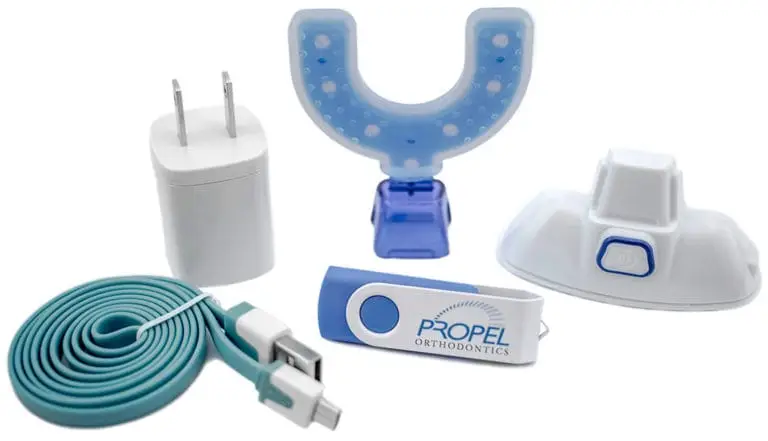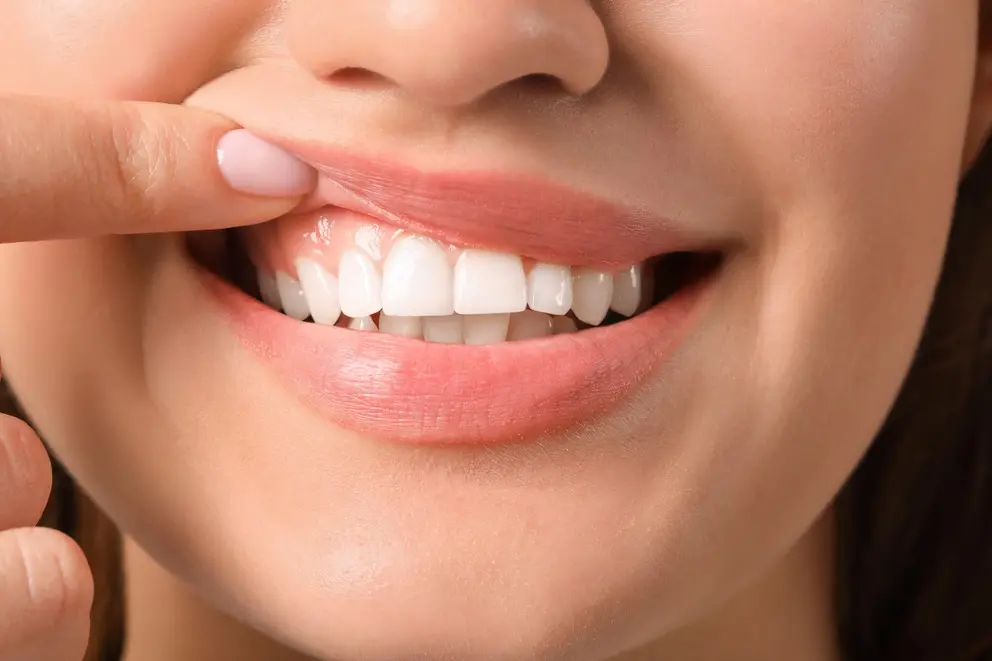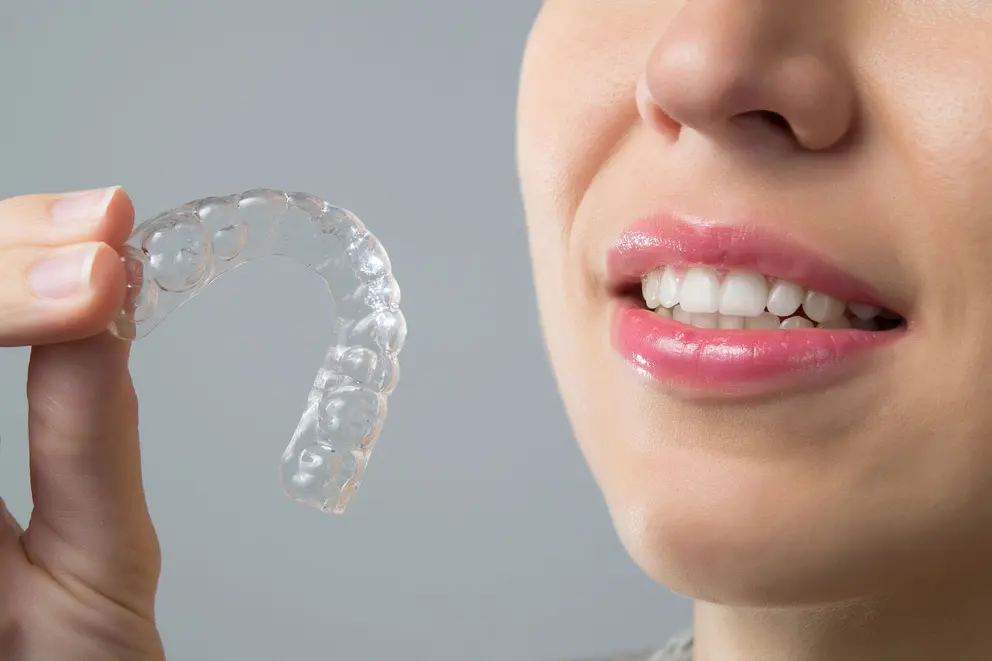
Accelerated Invisalign – Propel’s VPro5
Diamond Braces is happy to offer its patients VPro5 by Propel Invisalign, the latest tool that helps to straighten your teeth quicker.

If you're new to clear aligners, you might experience some unexpected slurring and lisping problems that you didn't have before. These issues can be treated with clear aligners lisp treatment.
Invisalign aligners can help you address these speech difficulties. Fortunately, these issues are extremely treatable, and often, reversible. If you notice emerging speech issues while wearing clear aligners , here’s what you should do to remedy them.

Yes, lisps can and will go away when you wear clear aligners. Additionally, it's highly probable that you won't even must be concerned about having a lisp at all. If you're looking for a solution to fixing a lisp with clear aligners, you're in the right place. According to a study published by Verena Nedwed, approximately 93 percent of patients wearing the most popular clear aligner brands should not experience any speech issues.
This study focused on a specific group of people. We looked at how they reacted to their treatment during the first 3-6 months.
This is the time when you're getting used to your new treatment. It is also when you might notice lisping or speech issues if they happen during Invisalign treatment. This period is crucial for understanding how the treatment option works and its treatment times.
Clearly, speaking well matters in life. If you have trouble talking with aligners, don't worry, it's usually temporary. Many folks experience lisps with popular clear aligner brands like braces.

Yes — if you’re one of the few new clear aligner patients who develop a lisp while wearing your appliances, you can rest assured knowing that the problem will likely resolve itself within a few weeks. Your tongue should naturally become more acclimated to the presence of the aligner trays.
Additionally, if you've had speech problems or lisps before, clear aligners like Invisalign trays could be helpful. Occasionally, lisps occur when the shape of the mouth isn't quite correct, causing the tongue to move into an improper position.
Fixing your teeth alignment might also improve your tongue placement and possibly make your lisp disappear. This could be a concern for individuals anxious about developing a permanent lisp from aligners. Such worries often arise when using products like Invisalign trays. Therefore, addressing these permanent lisp from aligners concerns is essential.
Granted, all of that could depend on the particular type of lisp you’re dealing with:
Some lisps may get better with clear aligners, but if yours doesn't, you might need extra help. Your orthodontist might suggest speech exercises or therapy from a speech-language pathologist for the more stubborn lisps. For the most challenging cases, additional palatal procedures may be necessary as part of orthodontic treatment to improve your oral health.
Being more cognizant of tongue movements in relation to teeth can do a lot to mitigate the habits that cause lisping. You can become more mindful of this by practicing specific enunciations like “Z”, “S”, “Th”, or “Ch” with your tongue pressed downward.
Don't just concentrate on consonants, vowels, or syllables alone. Focus on enunciating full phrases or sentences without lisping. Think of different conversational techniques to work on. Practice makes perfect!
There's a reason they’re called tongue twisters. Tongue up-and-downs and side-by-side movements will help work out tension from the tongue muscles and ease the pressure behind the lisp.
Try specific jaw and cheekbone massages to ease the pressure around your mouth.
Drinking cool water with a straw isn't just a safe, soothing, and hydrating form of pain relief with clear aligners. It also helps to keep your tongue naturally positioned down, away from the palate and front teeth.
If your lisp sticks around during clear aligner treatment, try these methods to help fix it. If the lisp doesn't go away after trying these tricks for a while, talk to a trusted orthodontist for a second opinion. They can help you out with your aligners or orthodontic appliance.
From there, they can determine whether or not more extensive speech therapy would be necessary to manage it, or whether or not you would need revised aligner fits.
If your lisp sticks around during clear aligner treatment, try these methods to help fix it. If the lisp doesn't go away after trying these tricks for a while, talk to a trusted orthodontist for a second opinion. They can help you out with your aligners or orthodontic appliance.
From there, they can determine whether or not more extensive speech therapy would be necessary to manage it, or whether or not you would need revised aligner fits.

Most people wearing a set of aligners might lisp for a couple of weeks. Although not surefire, doing some exercises can speed up the improvement. It's good to remember that aligners are removable and the lisp usually gets better on its own.
To understand how clear aligners can help with speech issues, it's important to know they're often better than what you'd think. If you're concerned about developing a lisp due to your aligner, try not to worry excessively. Typically, this issue is temporary, much like the duration of wearing the aligner itself.
To improve your chances of getting straight teeth with Invisalign, consider this advice. Sometimes, Invisalign patients might still face speech impediments. If this happens, it's wise to see an orthodontist. They can recommend helpful exercises or speech therapy if it's necessary.
It's good to compare clear aligners with other options like traditional metal braces, lingual braces, or ones with brackets and wires. All these methods work to move teeth and straighten them, but each has its pros and cons. Traditional braces are more visible, while lingual braces go behind your teeth. Clear aligners are less noticeable, but you might need to get used to speaking with them at first.
No matter what you choose, the goal is to straighten your teeth and improve your smile. Remember, talking to a professional is the best way to find out what's right for you and your tooth movement needs.